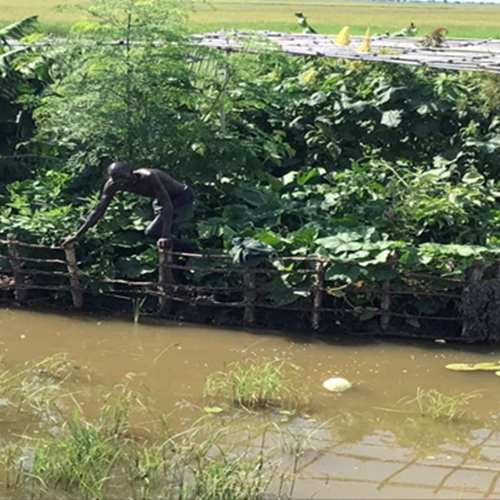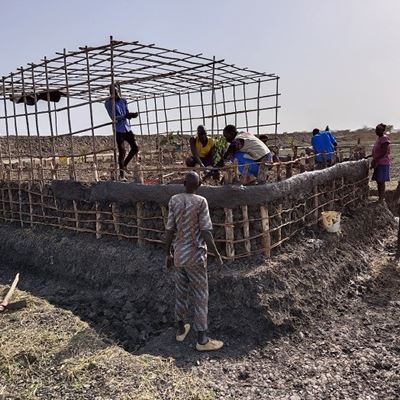News
Farming in the Flood Waters – DRC’s Chinampa Gardens in Bentiu
Over the past four years, the inhabitants of Bentiu have faced an unrelenting battle against the disruptive effects of floods on their daily lives.

Many people have been forced to abandon their homes, leaving them homeless and in search of safer places. This has resulted in an increased reliance on humanitarian aid, further highlighting the pressing need for sustainable and innovative aid solutions. Considering this, the Danish Refugee Council (DRC), with funds from USAID's Bureau for Humanitarian Assistance (BHA), is exploring avenues for more effective and enduring sustainable support for the people of Bentiu, such as the use of Chinampa gardens to cultivate crops within the communities all year round.
Despite the lack of clarity surrounding the origins of chinampa agriculture in the Valley of Mexico, it is widely acknowledged that this practice was extensively employed throughout Mexico for several centuries preceding the ascendance of the Aztecs.
Chinampa gardens are raised flood-adaptive agriculture systems, consisting of elevated platforms, like island plots surrounded by water and connected to ditches. The gardens are constructed manually by digging canals, piling, heaping, and constructing soil structure.
A soil layer is developed in the form of a bed elevated with fertile organic and fish waste products, accompanied by mulching to increase moisture in the beds. With that, soil fertility is enhanced by the organic waste products mixed with local green vegetation, such as dry grasses, animal waste for manure, and mud. The heap is then fenced with timber poles and bamboo sticks to protect the garden from wind, pests, and erosion in case the water levels rise.
In Rubkona, a group of farmers who were trained through the DRC project, Complimentary Action for Resilience Building (CARB), have adapted the use of chinampa gardens as a resilient and sustainable mechanism for climate adaptation.
With the rainy season approaching and the floodwaters showing no signs of drying up in Unity State, the farmers are confident that they will still be able to practice agriculture on their chinampa gardens despite the rains that are most likely to cause flooding in the state.


